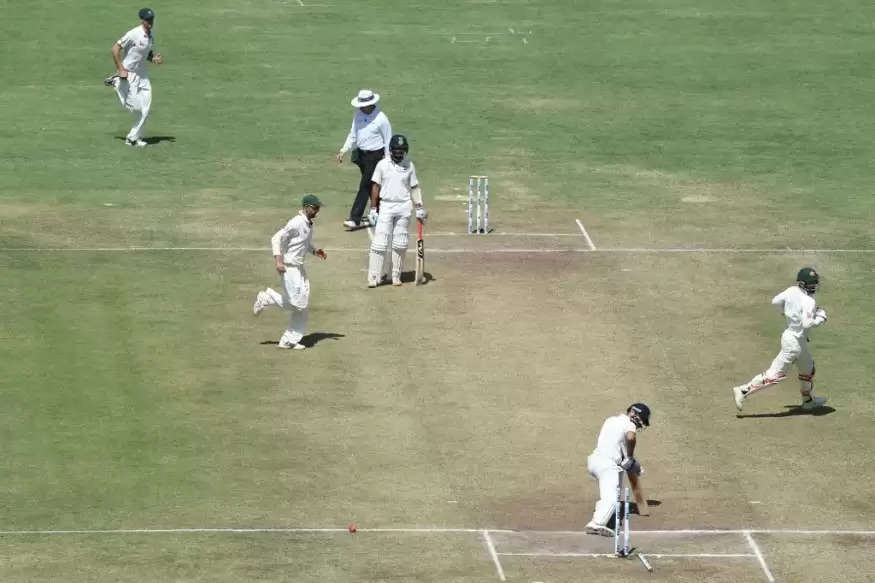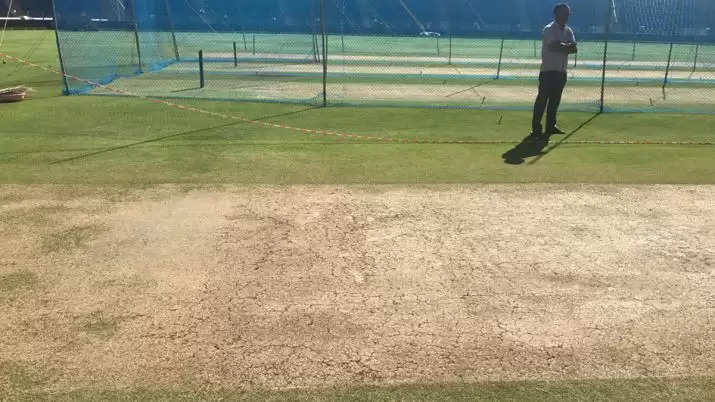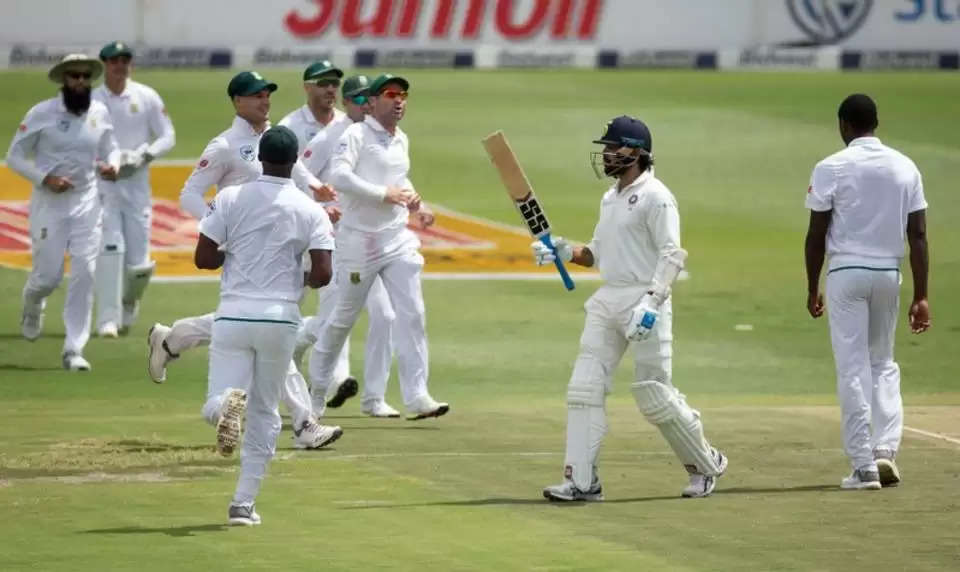Does the ICC term a rank-turner as a ‘poor pitch’?

As the second Test between India and South Africa moves to Pune, all eyes will be on the track that has already been given a ‘poor pitch’ rating by the ICC . In 2017, there was a lot of controversy that surrounded the pitch at the Gahunje Stadium which is on the outskirts of Pune. It hosted the first ODI between India and England in January 2017 which produced a belter of a track. More than 700 runs were scored in the game as India clinched that game with five balls to spare.
However, it was only after this game that the track created controversies. It hosted its maiden Test match a month after the aforementioned game when India faced Australia in the first of the four Test matches in 2017. However, the pitch turned out to be a square turner. Batsmen struggled big time and spinners took 31 out of the 40 wickets to fall in that game. The game finished in less than three days and India lost the game by a huge margin. Following the game, the ICC rated the pitch as ‘poor’.

Later that year, it hosted another ODI game between India and New Zealand. The pitch curator, Pandurang Salgaonkar who is former Maharashtra cricketer was suspended by the ICC after he was caught in a sting operation for pitch fixing. However, the ICC passed a clean chit but he was suspended for six months for not informing the ICC’s Anti-Corruption Unit about the approach for pitch tampering.
Hence, Pune has been under the scanner for quite a while. It is under immense pressure to produce a good pitch, considering it’s already on the verge of a ban, because of the ‘poor’ rating it got for the India-Australia Test.

The Pune pitch that had been rated poor in 2017
All eyes, thus, will be on the 22 yards when the two captains (Virat Kohli and Faf du Plessis) walk out for the toss. Both captains will have the previous Test at the back of their mind.
So, with all this talk of a ‘poor’ or a bad pitch, what exactly is a poor pitch according to the ICC?
It may only come out when it is rated ‘poor’ or ‘unfit’ and not come in the eye every time, but match referees give feedback on the pitch and the outfield after every game (irrespective of the format). The match referees fill a standard form which asks various questions regarding the pitch and the outfield and it is updated over the course of the full game. The last two questions in this 10-question form is the pitch rating and the outfield rating that the ICC match referees need to give after reviewing the conditions.
There are six categories in the rating system. These are namely, very good, good, average, below average, poor and unfit. And the match referee needs to select one among these six ratings and award the pitch and the outfield.
The ICC defines each one of the six rating categories according to its standard conventions. The following are the ICC conventions and definitions for each category of the pitch rating.
- A pitch is termed ‘very good’ if there is, good carry, limited seam movement and consistent good bounce early in the match and as the pitch wears as the match progresses, with an acceptable amount of turn on the first two days but natural wear sufficient to be responsive to spin later in the game.
- A pitch is termed ‘good’ if there is, average carry, moderate seam movement and consistent bounce both early in the match and as the pitch wears as the match progresses, natural wear sufficient to be responsive to spin from day 1, though not quite meeting the criteria for carry and bounce for a “very good” pitch.
- A pitch is termed ‘average’ if it lacks carry, and/or bounce and/or occasional seam movement, but consistent in carry and bounce. A degree of turn, but with average bounce for the spinner. Falling significantly short of “very good” with respect to carry, bounce and turn.
- A pitch is termed ‘below average’ if there is either very little carry and/or bounce and/or more than occasional seam movement, or occasional variable (but not excessive or dangerous) bounce and/or occasional variable carry. If a pitch demonstrates these features, then the pitch cannot be rated in a higher category regardless of the amount of turn the pitch displays at any stage of the match.
- A pitch is termed ‘poor’ if it is one that does not allow an even contest between bat and ball, either by favouring the batters too much, and not giving the bowlers (seam and spin) from either team sufficient opportunity to take wickets, or by favouring the bowlers too much (seam or spin), and not giving the batters from either team the opportunity to make runs.If any of the following criteria apply, a pitch may be rated “poor”:
- The pitch offers excessive seam movement at any stage of the match
- The pitch displays excessive unevenness of bounce for any bowler at any stage of the match
- The pitch offers excessive assistance to spin bowlers, especially early in the match
- The pitch displays little or no seam movement or turn at any stage in the match together with no significant bounce or carry, thereby depriving the bowlers of a fair contest between bat and ball.
- A pitch is termed ‘unfit’ if it is dangerous.
Moreover, just like players, the grounds and pitches receive demerit points as well. These points are maintained over a period of five years. Three out of the aforementioned categories have demerit points. If the pitch is rated below average, poor or unfit, the pitch will receive demerit points – one point for being rated ‘below average’, three for being rated ‘poor’ and five for being rated ‘unfit’. Hence, if any ground accumulates five demerit points over the course of five years, it will be suspended from hosting any international match for a period of 12 months. Meanwhile, if it accumulates 10 demerit points, then it will be suspended from international cricket for a period of 24 months.

India and SA have played at poor pitches in their last two series’ – at Nagpur in 2015, and at Jo’berg last year
As the pitch and the ground conditions are both rated, if both receive demerit points then the one with higher demerit points is considered. For example, if the pitch is rated is rated ‘poor’ (two demerit points) and the outfield is rated ‘below average’ (one demerit point) then overall, the ground is given two demerit points.
Hence, Pune is already on notice after the one Test match in 2017. They can ill afford to produce a square turner again. With the Indian monsoon being very inconsistent and still going on this year, it will be interesting to see how much time the curator and the groundsmen have got to prepare the pitch.
Moreover, India and South Africa have a history with ‘poor’ pitches. In fact, during their last two Test series, at least one ground has been been given a ‘poor’ pitch rating. Nagpur was rated ‘poor’ in 2015 with it being a rank turner. Johannesburg got a similar rating considering that there was an excessive amount of uneven bounce.
Thus, another ‘poor’ rating might put Pune in danger of losing out on international games for a year.
